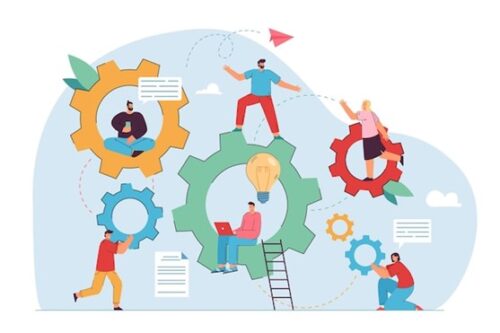When it comes to decision making, the Whole Brain Model can be an incredibly valuable tool. This model helps us understand how different parts of our brain contribute to the decision-making process. By considering all aspects of our thinking, including logic, creativity, emotions, and practicality, we can make more well-rounded and informed decisions. The Whole Brain Model encourages us to tap into all areas of our brain, rather than relying solely on one dominant thinking style. This not only leads to better decision making but also allows us to fully explore different perspectives and possibilities. With the Whole Brain Model, we can approach decision making with confidence and enthusiasm, knowing that we are utilising the full potential of our brain. Mastering the art of decision making can be learnt.
Introduction to Decision Making and the Whole Brain Model
Decision making is an essential part of everyday life. From small choices like what to wear in the morning to more significant decisions like which job offer to accept, we are constantly faced with the need to make choices. However, decision making can be a complex process, influenced by various factors, including our brain’s functioning. Understanding how the brain works in decision making can help us make more informed and effective choices.
One model that has gained popularity in recent years is the Whole Brain Model. This model, developed by Ned Herrmann, suggests that our brains have four distinct thinking preferences, represented by different quadrants. These quadrants are analytical, practical, relational, and experimental. By understanding our own thinking preferences and those of others, we can tap into our full creative potential and make better decisions.
The Science of Decision Making
To truly mastering the art of decision making, it is essential to understand the science behind it. Our brains are incredibly complex organs, and decision making involves the coordination of various brain regions and processes.
One crucial area involved in decision making is the prefrontal cortex, located in the frontal lobe of the brain. This region is responsible for higher-order cognitive functions, such as reasoning, planning, and judgment. It plays a vital role in evaluating options and making decisions based on available information.
Another area of the brain that plays a significant role in decision making is the limbic system, specifically the amygdala. The amygdala is responsible for processing emotions and plays a crucial role in determining the emotional significance of different choices. Emotions can heavily influence decision making, as our feelings can guide us towards certain options or steer us away from others.
Understanding the Art of Decision Making
To gain a deeper understanding of decision making, it is essential to explore the different parts of the brain involved in the process. While the prefrontal cortex and the amygdala are key players, other brain regions also contribute to decision making.
The parietal lobe, for example, is involved in processing sensory information and spatial awareness. It helps us gather and interpret relevant data to inform our decisions. The occipital lobe, responsible for visual processing, also contributes to decision making by providing us with visual cues and information.
Additionally, the basal ganglia, located deep within the brain, plays a role in habit formation and automatic decision making. This structure helps us streamline our decision making process by automating repetitive or routine choices.
Understanding the various brain regions involved in decision making can provide valuable insights into why we make certain choices and how we can optimise our decision making abilities.
The Role of the Limbic Brain in Decision Making
The limbic system, particularly the amygdala, plays a significant role in decision making by integrating emotional responses into the process. The amygdala processes emotional information and assigns emotional significance to different options. This emotional influence can either enhance or hinder decision making, depending on the situation.
For example, when faced with a potentially risky decision, the amygdala may trigger fear or anxiety, leading to a more cautious approach. On the other hand, positive emotions, such as excitement or happiness, can influence us to take risks and explore new possibilities.
By understanding how the limbic brain influences decision making, we can become more aware of our emotional responses and make decisions that align with our goals and values.
The Impact of Communication Breakdowns on Decision Making
Effective communication is crucial for successful decision making. However, communication breakdowns can significantly impact the quality of decisions made.
When communication breaks down, important information may be lost or misunderstood, leading to misinformed choices. This can occur in various contexts, such as miscommunication between team members, unclear instructions, or misinterpretation of data.
To mitigate the impact of communication breakdowns on decision making, it is important to foster open and transparent communication channels. Encouraging active listening, clarifying expectations, and promoting a culture of collaboration can help minimise communication breakdowns and improve decision making outcomes.
Mastering Art of Decision Making and the Whole Brain Model
The Whole Brain Model provides a framework for understanding our thinking preferences and how they influence our decision making. By identifying our dominant and less dominant thinking styles, we can leverage our strengths and address our weaknesses in different decision-making situations.
In everyday life, we encounter a wide range of decision-making situations. From personal choices like what to have for dinner to professional decisions like which candidate to hire, the Whole Brain Model can help us navigate these situations more effectively.
For example, in analytical decision-making situations, individuals with a preference for analytical thinking can excel. They are adept at collecting and analysing data, weighing pros and cons, and making logical choices based on evidence.
On the other hand, in creative decision-making situations, individuals with a preference for experimental thinking can thrive. They are comfortable with ambiguity, open to new ideas, and can think outside the box to come up with innovative solutions.
By applying the Whole Brain Model to everyday decision-making situations, we can tap into our full creative potential and make choices that align with our goals and values.
How to Apply the Whole Brain Model to Improve Decision Making
To apply the Whole Brain Model effectively, it is important to understand each thinking preference and how they interact with one another. This understanding can help us leverage our thinking strengths and incorporate different perspectives into our decision making.
One technique for applying the Whole Brain Model is to engage in structured brainstorming sessions. By involving individuals with different thinking preferences, we can generate a diverse range of ideas and perspectives. This collaborative approach can lead to more innovative and well-rounded decisions.
Additionally, using tools like the Herrmann Brain Dominance Instrument (HBDI) assessment can provide valuable insights into our thinking preferences. The assessment measures our thinking dominance in each quadrant of the Whole Brain Model, helping us understand our natural thinking style and areas for development. Armed with this knowledge, we can make more informed decisions that encompass a broader range of perspectives.
Tools and Techniques for Effective Decision Making
In addition to the Whole Brain Model, there are various other tools and techniques that can enhance our decision making abilities.
One such technique is the decision matrix. A decision matrix involves listing out different decision criteria and assigning weights to each criterion based on its importance. By systematically evaluating options against these criteria, we can make more objective and informed decisions.
Another tool is the SWOT analysis, which stands for Strengths, Weaknesses, Opportunities, and Threats. This analysis helps us assess the internal and external factors that may influence a decision. By identifying strengths and weaknesses and evaluating potential opportunities and threats, we can make decisions that capitalise on our strengths and mitigate potential risks.
Conclusion: Unlocking Your Creative Potential Through the Whole Brain Model
Mastering the art of decision making is a lifelong journey that requires an understanding of our own thinking preferences and the factors that influence our choices. The Whole Brain Model provides a valuable framework for unlocking our creative potential and making more effective decisions.
By understanding the science of decision making, the different parts of the brain involved, and the impact of communication breakdowns, mastering art of decision making effectively.
Applying the Whole Brain Model and using tools and techniques like structured brainstorming sessions, the HBDI assessment, decision matrices, and SWOT analysis can further enhance our decision making abilities.
To unlock your creative potential and improve your decision making skills, consider contacting WHS and Training Compliance Solutions for an HBDI assessment. By understanding your thinking preferences, you can make more informed and effective decisions in all aspects of your life. Contact WHS and Training Compliance Solutions today and embark on your journey towards mastering the art of decision making.
Are you looking to expand your knowledge and skills? Look no further than eLearning, online, and onsite programs! These programs offer a convenient and flexible way to learn, allowing you to study at your own pace and in the comfort of your own home. With eLearning, you can access a wide range of courses and resources right at your fingertips. Online programs take it a step further, providing interactive and engaging content that keeps you motivated and connected with fellow learners. Onsite programs offer a more traditional classroom experience, allowing for face-to-face interactions with instructors and classmates. No matter which option you choose, these programs are designed to help you succeed and achieve your goals. So why wait? Start your learning journey today!












